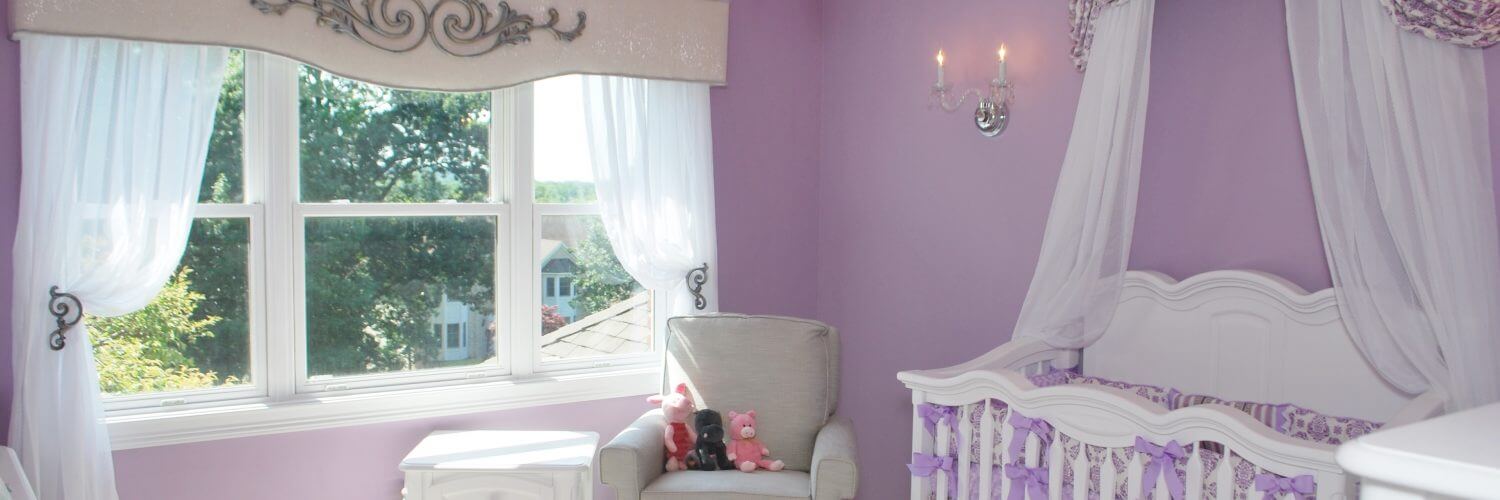Children are the most precious items many homeowners have within their four walls. While designing your home, you take them and their safety into consideration. How can we put together rooms that are beautiful and safe? And how can they incorporate low- or no-chemical window treatments and furniture to keep harmful products away from delicate skin and little lungs?
A room can provide comfort and safety. Designing home interiors, as well as exteriors, are essential parts of home safety. For example, you can buy a fence online to secure the yard, a pool barrier to prevent slips and falls, and so on. Interior decor also has elements of style and safety. Let’s dive into what four designers have to share about the same.
Nicole Lorber, owner and lead designer, Distinctive Interior Design, Marlton, NJ
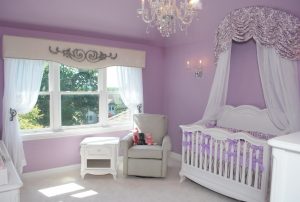
Interview the Child
When designing rooms for babies and young children, Lorber pumps parents for their ideas. But if the child is old enough, she asks them to gather pictures of things they like and interviews them. Sometimes their wishes are outlandish: dark colors on the walls or structural changes to the room. “I keep in mind that the parent is paying for it,” says Nicole Lorber with Distinctive Interior Design. “I try to keep the feel of what the kid is looking for in a less permanent way in the space.”
Include Blackout Lining
When kids are little, there’s nothing parents want than for them to sleep longer. When kids become teenagers, there’s nothing they want more than to sleep in. “There has to be a blackout layer at the window, even if it’s not seen, to help the kids sleep a little longer,” Lorber says. If you notice that your children are experiencing sleep issues even with the changes you are making to their room and sleep routine, then it may be wise to speak to a sleep doctor who can conduct a polysomnography (sleep study) that can help them target the issue and see what the best course of treatment is for the problems they are experiencing. Being aware of this from an early age can be beneficial in the long run.
Safe Hardware
Make sure the hardware for curtains and canopies has a breakaway element, especially if anything will hang near a crib. Also, make sure all hardware is installed securely. That will become vitally important once the child is old enough to grab and pull at the fabric-which can happen sooner than parents expect.
Marni Sugerman, owner and interior decorator, Decorating Den Interiors, Westchester County, NY
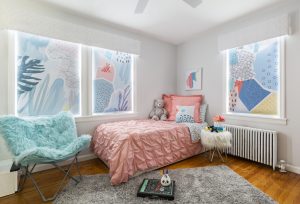 Photo by Kate Glicksburg
Photo by Kate Glicksburg
Designs That Grow with the Child
“When designing for a child’s bedroom, I like to select patterns that will grow with them,” says Marni Sugerman with Decorating Den Interiors. “Selecting an ideal color palette is key, as it sets the stage for years to come. Throw pillows and accessories can always be updated to transform a young child’s bedroom into a space fit for a teen.”
Print-on-Demand Fabric Saves Material
Sugerman likes to custom-design and print shades for kids. “I have a background in textile design, so I enjoy creating my own patterns. However, there are so many easy online resources for purchasing digital art,” she says. Digitally-printed shades are also an eco-friendly choice because designs can be printed for the exact size and shape needed. There’s also need to transport and stock inventory that might not get used. Comfortex’s Color Lux products are her favorite choice.
Manage Expectations for Room Darkening
“When my client wants a room-darkening shade, I often suggest adding drapery panels to block the tiny bits of light that peek through the edge of the shade,” she says. “Managing expectations of room-darkening window coverings is always important so clients are satisfied with the functionality of the treatment as well as the beauty and design.”
Jennifer Jones, principal designer and owner, Niche Interiors, San Francisco
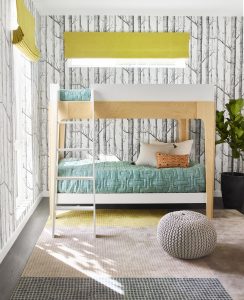 Photo by R. Brad Knipstein
Photo by R. Brad Knipstein
Striking Romans Stand Out
“We love injecting bold color or pattern into a kid’s bedroom with the window treatments,” says Jennifer Jones with Niche Interiors. “Flat-fold roman shades are our favorite style. They add softness and provide blackout coverage.”
Avoid Vinyl Products
“One thing to avoid when specifying window treatments for kids’ spaces are PVC roller shades, which off-gas harmful chemicals into the air,” she adds. “If you opt for roller shades, be sure to check that the material is PVC-free.”
Becky Lane, interior decorator and owner, Decorating Den Interiors, Olathe, KS
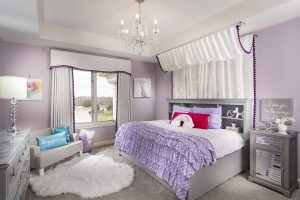 Room design by Jamie Gage. Photo by Jeremy Mason McGraw, Global Image Creation
Room design by Jamie Gage. Photo by Jeremy Mason McGraw, Global Image Creation
Design for Function
When working on a child’s bedroom, Becky Lane with Decorating Den Interiors consider the many ways the room will be used. “Will they need a place to study? Will they frequently have friends staying over?” These questions help drive the final design.
Safety First
“Safety is a huge concern in homes with children,” says Lane. “Whenever possible, place a crib or bed on a wall that has no window. Do not have furniture such as a chair near a window that allows access for a small child to become too close to a window and possibly fall out. The Window Covering Safety Council recommends only using cordless window products in homes with young children. These products are so much more readily available in today’s market for this reason.” Look for the council’s Best for Kids label on products.
Consider the Sleeping Surface
When you lay on a mattress, you breathe in any chemicals or additives it contains. Due to the amount of time children spend sleeping, Lane recommends buying a high-quality mattress made from organic and natural fibers.


